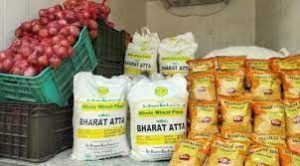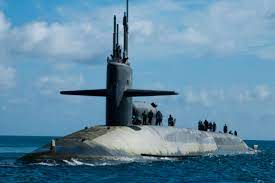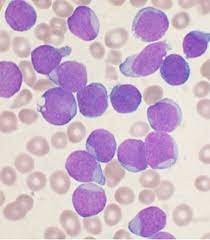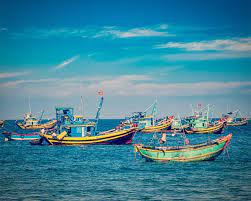Today’s Current Affairs: 8th Nov 2023 for UPSC IAS exams, State PSC exams, SSC CGL, State SSC, RRB, Railways, Banking Exam & IBPS, etc
Table of Contents
Cricket: Timed Out

Sri Lankan Batsman Angelo Mathews’ timed-out dismissal during a recent ICC Men’s Cricket World Cup 2023 match against Bangladesh stands as a first instance of timed-out dismissal in the 146-year chronicle of International Cricket.
- As per the ICC Men’s Cricket World Cup 2023 playing conditions, the incoming batter must be ready to face the next ball within a strict 2-minute time limit.
- However, the Marylebone Cricket Club’s (MCC) Law 40.1.1 states that following a wicket fall or a batter’s retirement, the new batter must be prepared to face the next ball within 3 minutes.
- Failure to do so results in a ‘Timed Out’ dismissal.
- The batter argued that the delay was due to a faulty helmet, not an attempt to waste time or gain an advantage.
- However, the rules do not account for last-minute equipment malfunctions.
Timed Out Rule in Cricket:
- In cricket, the “Timed Out” rule states that after the fall of a wicket or the retirement of a batter, the incoming batter must be ready to receive the ball or for the other batter to be ready to receive the next ball within 2 minutes.
- If the batsman fails to do so, they will be considered out.
- In a past test match in 2007, India’s Sourav Ganguly came close to being timed out due to unusual circumstances, but the situation was resolved without an appeal.
Project Kusha:

India is embarking on Project Kusha, a mission designed to enhance its air defence capabilities with a system rivalling the effectiveness of the renowned S-400.
- It includes the acquisition of three long-range Interceptor missiles with ranges of 150km, 250km, and 350km, ensuring comprehensive protection against aerial threats.
- These missiles have a high single-shot kill probability of at least 85% and can increase this to 98.5% when two different missiles are launched sequentially with a short gap.
S-400 Triumf:
- The S-400 Triumf is a mobile surface-to-air missile (SAM) system developed by Russia.
- The S-400 is capable of intercepting and destroying various aerial targets, such as aircraft, drones, cruise missiles, and ballistic missiles.
- It has an operational range of up to 400 kilometres and a surveillance range of up to 600 kilometres. It can engage targets up to an altitude of 30 kilometers flying at a speed of 17,000 kilometers per hour or around 13 Mach – 13 times the speed of sound.
- The S-400 is considered one of the world’s most advanced air defence systems that can simultaneously track and neutralize a range of incoming aerial threats.
‘Bharat’ Atta(Wheat Flour) : New Initiative

The Indian government has launched the sale of ‘Bharat’ brand Atta (wheat flour) with a maximum retail price (MRP) of Rs 27.50 per kilogram which is lower than the national average price of Rs 35.93 per kg.
- This initiative is part of the government’s ongoing efforts to stabilize the prices of essential commodities and provide relief to consumers.
- ‘Bharat’ Atta will be available through various outlets, including Kendriya Bhandar, National Agricultural Cooperative Marketing Federation of India Limited (NAFED), and National Cooperative Consumer Federation (NCCF), ensuring its accessibility to a broader consumer base.
- NAFED, founded in 1958, is a leading Indian cooperative organization for agricultural product procurement and marketing.
- NCCF is an apex organization for consumer cooperatives. It functions under the Ministry of Consumer Affairs, Food and Public Distribution.
- Both NAFED and NCCF are registered under the Multi-State Co-operative Societies Act, of 2002.
- The efforts to stabilize prices of essential commodities have not only benefitted consumers but also supported farmers by ensuring a fair price for their produce.
Aquaculture Crop Insurance Scheme For Shrimp And Fish Farming:

The Ministry of Fisheries, Animal Husbandry & Dairying has discussed the technical challenges in the implementation of the Aquaculture Crop Insurance scheme for Shrimp and Fish farming under the Pradhan Mantri Matsya Sampada Yojana (PMMSY) scheme.
- To mitigate the risks faced by aqua farmers, NFDB (National Fisheries Development Board), which is the nodal agency for implementation of PMMSY, proposeed to implement the Aquaculture Crop Insurance scheme.
- The Scheme aims to provide basic cover for brackish water shrimp and fish on pilot basis for one year in the selected States of Andhra Pradesh, Bihar, Gujarat, Madhya Pradesh and Odisha.
- The term aquaculture broadly refers to the cultivation of aquatic organisms in controlled aquatic environments for any commercial, recreational or public purpose.
- The breeding, rearing and harvesting of plants and animals takes place in all types of water environments including ponds, rivers, lakes, the ocean and man-made “closed” systems on land.
Ohio-class Submarine:

A US nuclear-powered Ohio-class submarine was recently deployed in the Middle East to help prevent the Israel-Hamas war from spiralling into a broader conflict.
- The Ohio class is a class of nuclear-powered submarines currently used by the United States Navy.
- They are the largest submarines ever built for the U.S. Navy.
- The US Navy has a total of 18 Ohio-class submarines, which consist of 14 ballistic missile submarines (SSBNs) and four cruise missile submarines (SSGNs).
- The SSBN submarines are also known as “Trident” submarines and provide the sea-based leg of the U.S. nuclear triad.
- The 14 SSBNs together carry about half of S. active strategic thermonuclear warheads.
- They were designed specifically for extended war deterrence
- The class’s design allows the warship to operate for about fifteen years between major overhauls.
- Each of these submarines is provided with two complete crews, called the Blue Crew and the Gold Crew, with each crew serving typically on 70- to 90-day deterrent patrols.
- They can travel at speeds of 30+ knots and remain submerged indefinitely.
- Each SSBN submarine is armed with up to 24 Trident II submarine-launched ballistic missiles (SLBM).
- Each SSGN is capable of carrying 154 Tomahawk cruise missiles, plus a complement of Harpoon missiles to be fired through their torpedo tubes.
Acute Lymphoblastic Leukaemia:

The researchers found a statistically significant correlation between a rise in soy production and acute lymphoblastic leukaemia (ALL) deaths in children between 2008 and 2019 in Brazil’s Amazon and Cerrado biomes.
- Acute Lymphoblastic Leukaemia (ALL) is a type of cancer of the blood and bone marrow—the spongy tissue inside bones where blood cells are made.
- The word “acute” in acute lymphocytic leukaemia comes from the fact that the disease progresses rapidly and creates immature blood cells rather than mature ones.
- It is the most common type of cancer in children.
- Symptoms: Bleeding from the gums, Bone pain, Fever, Frequent infections, frequent or severe nosebleeds, etc.
- It occurs when a bone marrow cell develops changes (mutations) in its genetic material, or DNA.
- A cell’s DNA contains the instructions that tell a cell what to do. Normally, the DNA tells the cell to grow at a set rate and to die at a set time.
- In ALL, the mutations tell the bone marrow cell to continue growing and dividing.
- When this happens, blood cell production becomes out of control.
- The bone marrow produces immature cells that develop into leukemic white blood cells called lymphoblasts.
- These abnormal cells are unable to function properly, and they can build up and crowd out healthy cells.
- Treatment may include chemotherapy or targeted drugs that specifically kill cancer cells.
Indo-Pacific Maritime Domain Awareness (IPMDA) Initiative:

The Indian Navy Chief Admiral said that the Indo-Pacific Maritime Domain Awareness (IPMDA) initiative is a testament to the commitment to a free, open, inclusive, and rules-based Indo-Pacific region.
- Indo-Pacific Maritime Domain Awareness (IPMDA) initiative was announced at the 2022 Quad Leaders’ Summit in Tokyo.
- It was announced to track “dark shipping” and build a “faster, wider, and more accurate maritime picture of near-real-time activities in partners’ waters”, integrating three critical regions in the Indo-Pacific — the Pacific Islands, Southeast Asia, and the IOR.
- It is a technology and training initiative to enhance maritime domain awareness in the Indo-Pacific region and to bring increased transparency to its critical waterways.
- It harnesses innovative technology, such as commercial satellite radio frequency data collection, to provide partners across Southeast Asia, the Indian Ocean region and the Pacific with near real-time information on activities occurring in their maritime zones.
2nd World Local Production Forum:

The Indian delegation led by the Union Minister of State for Chemicals and Fertilizers participated in the 2nd World Local Production Forum at the Hague.
- World Local Production Forum is an initiative of the World Health Organisation.
- The first WLPF was organised virtually in 2021.
- Aim is to Increasing access to medicines and other health technologies.
- This forum provides Member States and the global community with a regular platform to shape strategies, galvanize collective action, and foster partnerships on sustainable local production to improve timely and equitable access to quality-assured health products.
- Secretariat: The Local Production and Assistance (LPA) Unit at the WLPF.
- The second WLPF aims:
- To provide a global platform to discuss key challenges in promoting local production and technology transfer.
- To explore opportunities and mechanisms to tackle the bottlenecks.
- To promote sustainable local production capacity to improve access to quality, safe and effective health products and technologies.
Section 437A Of The Code Of Criminal Procedure:

The Supreme Court recently issued notice to the Union of India on a plea challenging the constitutionality of Section 437A of the Code of Criminal Procedure (CrPC).
- Section 437A of the CrPC requires a person who has been acquitted to furnish a bail bond and sureties to be able to be released from custody.
- This is to ensure the appearance of the accused if an appeal is filed before a higher court against the acquittal.
- The provision states that accused persons must execute bail bonds with sureties to appear before the higher court when an appeal or petition is filed against the judgement of the respective court.
- These bail bonds are valid for six months, and failure to appear leads to bond forfeiture and the application of Section 446
- Section 446 CrPC provides that once the court records its satisfaction about the forfeiture of the bond, it shall call upon the person bound by such bond to pay the penalty or to show cause why it should not be paid.
- If sufficient cause is not shown and the penalty is not paid, the Court may proceed to recover the same as if such penalty were a fine imposed by it under this Code.
- Neither before the trial court nor before the appellate court, there is any applicability of Section-437A CrPC in cases where the accused is convicted.
- As such, the only time when the court is required to ask theaccused to execute bonds is the time when the court acquits the accused.
Heeralal Samariya : Chief Of The Central Information Commission

The Information Commissioner, Heeralal Samariya, was sworn in as the chief of the Central Information Commission (CIC) by the President Of India.
- Central Information Commission has been constituted under the Right to Information Act, 2005.
- The jurisdiction of the Commission extends over all Central Public Authorities.
- Objectives:
- To exercise the powers conferred on them under the RTI Act, 2005.
- To receive and inquire into complaints from any citizen (Section 18 of the RTI Act, 2005).
- To receive and decide upon the second appeal from any citizen (Section 19 of the RTI Act, 2005).
- To perform the duty of “Monitoring and Reporting “(Section 25 of the RTI Act, 2005).
- It consists of a Chief Information Commissioner and not more than ten Information Commissioners.
- They are appointed by the President of India on the recommendation of a committee consisting of the Prime Minister as Chairperson, the Leader of Opposition in the Lok Sabha, and a Union Cabinet Minister nominated by the Prime Minister.




